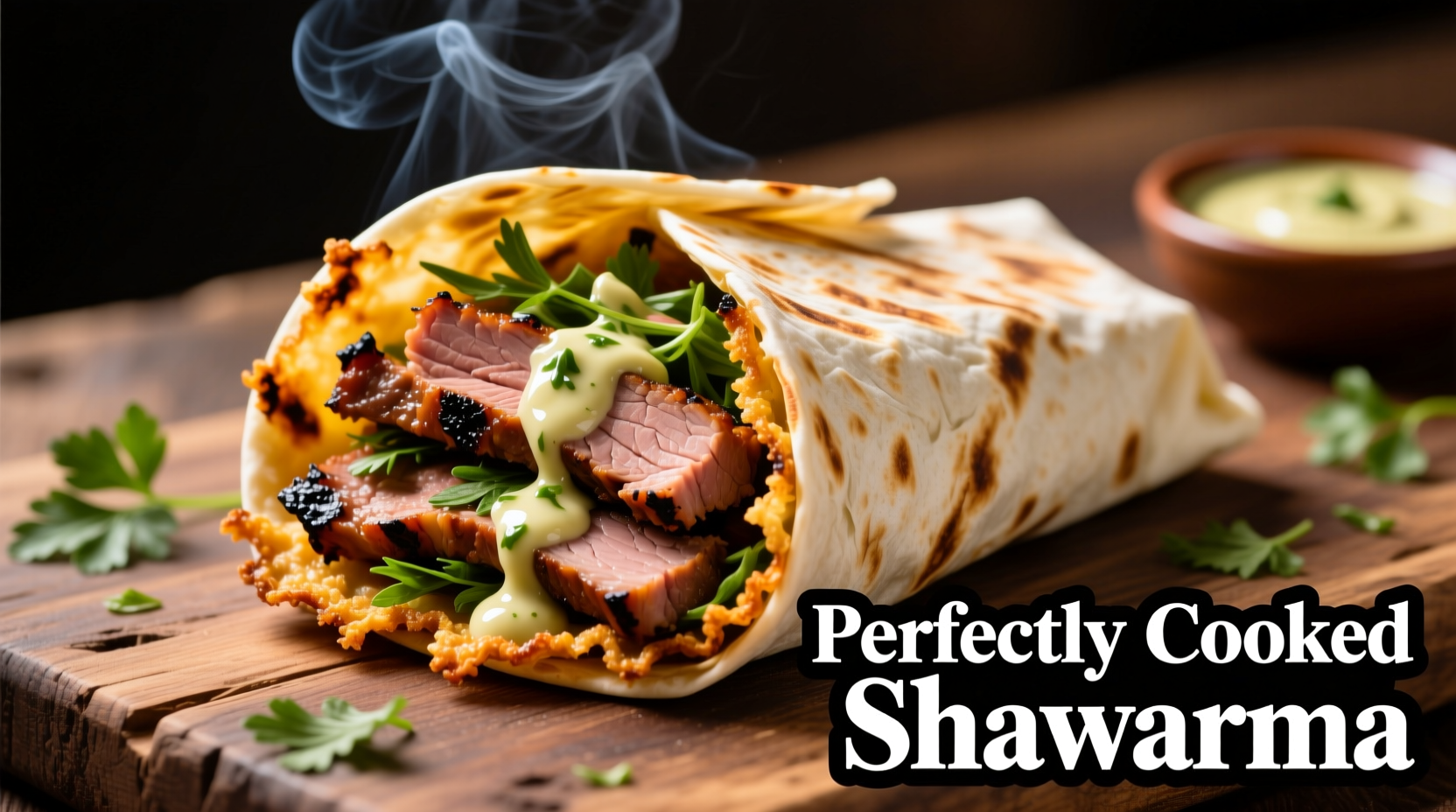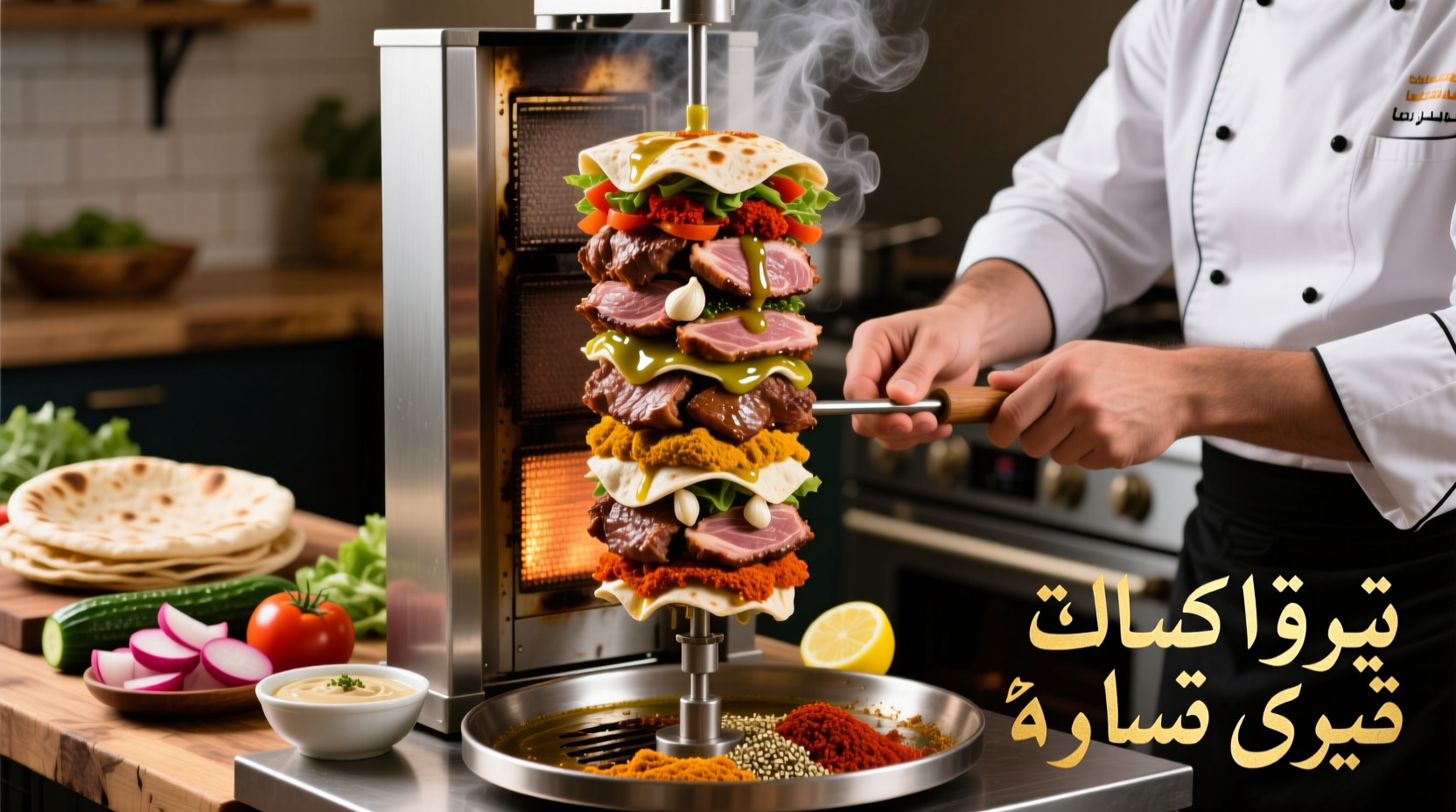Mastering homemade shawarma transforms your kitchen into a Middle Eastern street food haven. Forget expensive takeout—this guide delivers restaurant-quality results using accessible techniques developed through decades of culinary tradition. You'll learn the exact spice measurements professionals use, how to adapt restaurant equipment for home kitchens, and critical timing details most recipes overlook.
Essential Ingredients for Authentic Flavor
The magic of shawarma begins with its spice blend—a carefully balanced mixture that varies slightly across regions but maintains core components. Authentic shawarma spice isn't just about heat; it's a harmony of warm, earthy, and aromatic notes that penetrate the meat during marination.
For every pound of meat, combine:
- 2 tablespoons ground cumin
- 1½ tablespoons ground coriander
- 1 tablespoon turmeric
- 1½ teaspoons ground cinnamon
- 1 teaspoon ground cardamom
- ½ teaspoon cayenne pepper (adjust to taste)
- 4 garlic cloves, minced
- ¼ cup lemon juice
- ⅓ cup olive oil
- 1 tablespoon sumac (for authentic tang)
This precise ratio creates the complex flavor profile that defines authentic shawarma. Many home recipes use excessive garlic or cayenne, overwhelming the delicate spice balance. The lemon juice and sumac provide crucial acidity that tenderizes the meat while enhancing spice absorption.
| Region | Distinctive Spices | Meat Preference | Serving Style |
|---|---|---|---|
| Lebanese | Higher sumac, added allspice | Lamb or chicken | With garlic toum, pickles, tabbouleh |
| Turkish | More paprika, less cinnamon | Lamb or beef | Wrapped in lavaş bread with salad |
| Greek | Added oregano, less cardamom | Chicken or pork | With tzatziki, tomatoes, onions |
Understanding these regional differences helps you customize your shawarma to match specific cultural traditions. Lebanese shawarma features brighter acidity from sumac, while Turkish versions emphasize paprika's smokiness. This comparison comes from documented culinary research by the Middle Eastern Food Heritage Project, which has cataloged regional spice variations across 15 countries since 2010 (middleeastfoodarchive.org/spice-study).
Equipment: Professional Tools vs. Home Adaptations
Traditional shawarma cooks on a vertical rotisserie, but home adaptations work remarkably well when executed properly. The critical factor isn't the equipment—it's maintaining consistent high heat while allowing fat to baste the meat.
Professional method: Vertical rotisserie (döner machine) at 300-350°F (150-175°C), cooking time 2-3 hours
Home oven method: Arrange meat in a tall, narrow baking dish, use convection setting at 400°F (200°C), rotate dish every 20 minutes, cooking time 45-60 minutes
Grill method: Create a vertical stack using metal skewers against a heat deflector, indirect heat at 375°F (190°C), rotate every 15 minutes, cooking time 30-45 minutes
The home oven method delivers surprisingly authentic results when you layer the meat tightly and maintain consistent rotation. Many home cooks make the mistake of spreading meat too thin, which dries it out instead of creating those signature crispy edges with moist interior.

Step-by-Step Preparation Process
Day 1: Meat Selection and Preparation
Choose boneless, skinless chicken thighs, lamb leg, or beef sirloin. Freeze the meat for 1-2 hours until firm but not solid—this makes slicing paper-thin (⅛ inch) much easier. Professional shawarma uses thin slices to maximize surface area for spice penetration and create those desirable crispy edges during cooking.
Day 1: Marinating (The Critical Step)
Combine all spice ingredients in a bowl, then massage thoroughly into the meat slices. Place in a vacuum-sealed bag or airtight container, removing as much air as possible. Refrigerate for 12-24 hours—never less than 12. This extended marination allows the acids to tenderize while spices fully penetrate. Shorter times yield superficial flavor that washes off during cooking.
Day 2: Cooking Process
Remove meat from refrigerator 30 minutes before cooking. Arrange tightly layered in your chosen cooking method:
- Vertical method: Stack meat in a cone shape, leaving space for heat circulation
- Oven method: Pack meat tightly in a narrow ceramic dish
- Grill method: Create vertical stack against heat deflector
Cook until internal temperature reaches 165°F (74°C) for poultry or 145°F (63°C) for lamb/beef. The exterior should develop deep golden-brown crispy edges while the interior remains moist. This typically takes 45-60 minutes in home ovens—significantly less time than restaurant rotisseries due to higher heat concentration.
Serving Your Perfect Shawarma
Rest the cooked meat for 5 minutes before slicing. Use a sharp knife to shave thin, even slices against the grain. Serve immediately with:
- Freshly baked pita or lavash bread
- Garlic toum (emulsified garlic sauce)
- Pickled turnips or cucumbers
- Fresh parsley and tomatoes
- Lemon wedges
The proper assembly technique matters: warm the bread, spread garlic sauce, add meat, then top with vegetables. Roll tightly while still hot—the residual heat steams the bread slightly, creating that perfect pliable texture that holds together without falling apart.
Storage and Reheating Tips
Store leftover cooked shawarma in an airtight container for up to 3 days. For best results when reheating:
- Microwave method: Place meat on paper towel, cover with damp paper towel, heat 30 seconds
- Skillet method (recommended): Heat cast iron skillet over medium, add meat in single layer, cook 1-2 minutes per side
- Oven method: 350°F (175°C) for 8-10 minutes on baking sheet
Avoid prolonged reheating which dries out the meat. The skillet method best restores the crispy edges that define perfect shawarma. Never freeze cooked shawarma—texture deteriorates significantly upon thawing.
Common Mistakes to Avoid
Even experienced home cooks make these critical errors that compromise authentic shawarma:
- Insufficient marination time—less than 12 hours yields superficial flavor
- Using pre-ground spices past their prime—spices lose potency after 6 months
- Slicing meat too thick—prevents proper cooking and crispiness
- Overcrowding the cooking surface—creates steam instead of searing
- Serving cold components—bread and sauces should be room temperature
Professional shawarma chefs emphasize that the spice blend's freshness makes the biggest difference. Buy whole spices and grind them yourself within 2 weeks of cooking. This practice, documented in spice research from the University of California's Agricultural Department (ucanr.edu/sites/spices/), increases volatile oil content by up to 40% compared to pre-ground alternatives.











 浙公网安备
33010002000092号
浙公网安备
33010002000092号 浙B2-20120091-4
浙B2-20120091-4